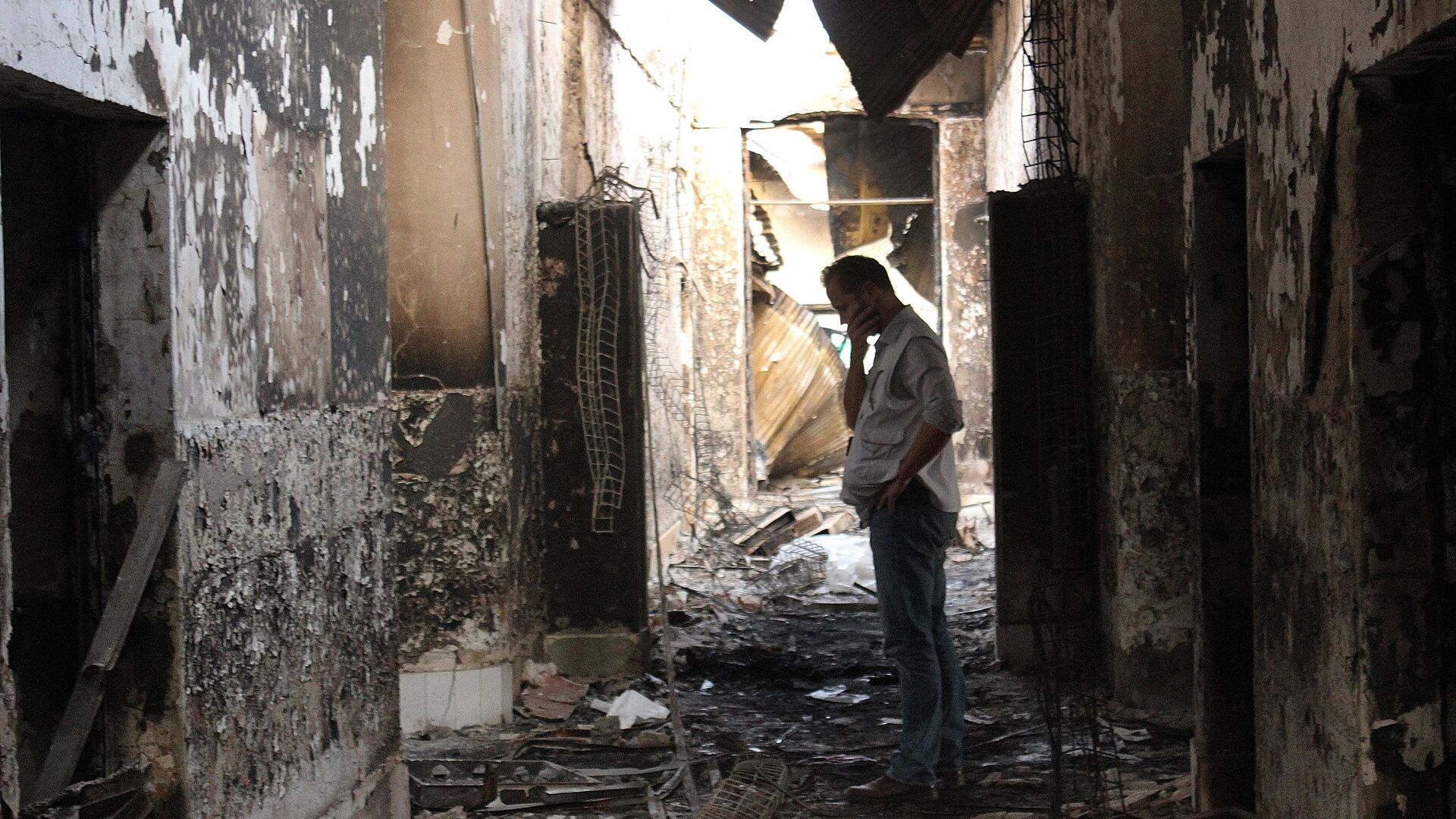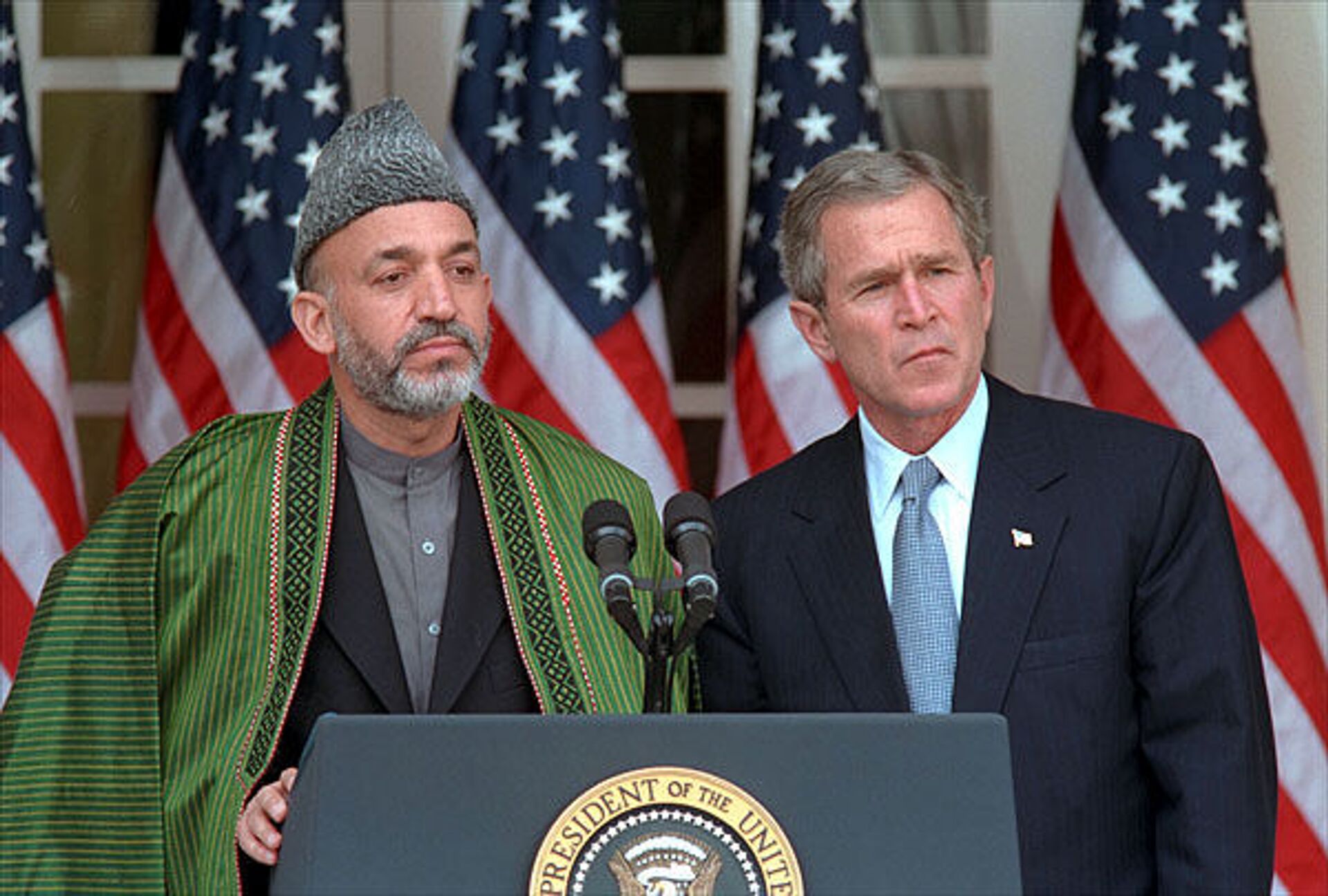From Afghan War Diary to Afghanistan Papers, US ‘Reconstruction’ Long Known to be Farce
23:05 GMT 16.08.2021 (Updated: 16:36 GMT 08.12.2022)

© AP Photo / Najim Rahim
Subscribe
The US spent $143 billion on “nation-building” in Afghanistan, a cause US President Joe Biden said Monday was never Washington’s goal, despite regular boasting about the progress made toward westernizing the country’s political system and values. In the end, little has changed in 20 years, except the deaths of nearly half a million people.
The quick folding of the US-backed Afghan government before a Taliban advance has caught many off-guard after Pentagon leaders claimed little chance of its overthrow. However, almost since the 2001 US invasion, a steady stream of reports showed the “reconstruction” was a rolling disaster.
‘So-Called Nation Building’
The US invasion of Afghanistan began on October 7, 2001 - less than a month after the September 11, 2001, terrorist attacks that killed nearly 3,000 Americans. None of the airplane hijackers were Afghans, but the Islamic terrorist group that claimed responsibility, Al-Qaeda, was based in eastern Afghanistan, where the Taliban had allowed them to build training facilities.
The administration of then-US President George W. Bush demanded the Taliban hand over Al-Qaeda leader Osama bin Laden; they agreed to do so, if the US provided firm evidence of bin Laden’s guilt. Washington rejected this and prepared for the first strikes of what would become a “global war on terrorism.”
In reality, this was always the goal: Bush’s government was dominated by neoconservative figures from the Project for a New American Century (PNAC) think tank, which had mused in September 2000 that the US needed “some catastrophic and catalyzing event – like a new Pearl Harbor” to jump start their grand crusade against what Bush’s deputy secretary of defense, Paul Wolfowitz, called “old surrogate Soviet regimes” across the Middle East, including Syria, Iraq, Iran, and Afghanistan.
However, Bush and his central leadership scarcely believed overthrowing these governments would require extensive work afterward on their part: on October 12, five days after the US invasion began, Bush told reporters ”it would be a useful function for the United Nations to take over the so-called nation-building.”
Bush pledged $320 million in aid for Afghanistan for the following year, but it wasn’t until 2004 that the first elections were organized. The winner was Hamid Karzai, a CIA asset appointed to head the interim government beginning in December 2001.
The US invasion drove the Taliban from power, but it didn’t destroy their organization, and after a few months’ regrouping, the group launched a new insurgency in early 2002 in the country’s east and south, which proved impossible to quash and grew steadily to control half the country by the summer of 2018.

Afghan Interim President Hamid Karzai and US President George W. Bush at a press conference in 2002
Eight years after the 2001 invasion, as newly elected president Barack Obama announced a surge of 33,000 troops were being sent to Afghanistan to rapidly end the war, he denied the US was interested in “a nation-building project of up to a decade.”
By 2010, the Congressional Budget Office estimated the US had authorized some $345 billion spending on the Afghan War, and US troops in-country exceeded 100,000. Karzai’s re-election in 2009 was accomplished via ballot-stuffing, demonstrating the country was no closer to democracy than before the war. Meanwhile, civilian deaths grew dramatically, with nearly 14,000 killed by the end of 2010, according to a count by the Watson Institute.
Afghanistan War Diary
In July 2010, WikiLeaks published a massive compendium of 91,000 Pentagon documents from the war, most of them classified as secret, which it dubbed the Afghan War Diary and which were later revealed to have been passed to them by then-US Army specialist Chelsea Manning.
The logs covered the full scope of the war up until that point and revealed a grim side of the war scarcely seen in the corporate media, including the routine cover-up of civilian deaths by soldiers who classify the dead as combatants and the worsening military situation as the Taliban deployed improvised explosive devices (IEDs) with increasing and deadly effectiveness.
Indeed, more recently, National Security Agency intelligence analyst Daniel Hale, who was sentenced last month to 3.75 years in prison for blowing the whistle on the US’ drone warfare practices, revealed that simply being a male of a certain age was enough for American servicemembers to classify them as combatants when it came to authorizing a drone strike or counting those killed in one.
The files WikiLeaks published also revealed how dependent the Pentagon had become on private security contractors - mercenary outfits like DynCorp and the infamous Blackwater USA - to buttress its numbers, and how those same mercenaries destroyed any goodwill the US-led occupation might have accumulated through their terrorizing of civilians and routine and wanton violence.
SIGAR Reveals Corruption, Waste
Seven years into the war, in 2008, Congress created the Office of the Special Inspector General for Afghanistan Reconstruction (SIGAR) to keep track of the massive amounts of money being spent on the Central Asian country. SIGAR’s quarterly reports, delivered in the frank style of a watchdog, became an important sounding board for the ongoing failures of the “reconstruction.” - until that sounding board was muzzled by the Trump White House.
The watchdog issued two damning reports in 2014 called “Lessons Learned” aimed at unveiling what had gone wrong in the US’ approach to Afghanistan but which, ironically, had their most damning interviews censored. In 2019, when the Washington Post published thousands of documents in what it called the Afghanistan Papers, the paper revealed what didn’t make it into the official reports.
In one interview, Robert Finn, who served as US ambassador to Afghanistan from 2002 to 2003, told SIGAR the Bush administration had refused to form long-term plans for the country, shaping its approach by domestic politics.
“This is a systemic problem of our government,” he said. “We can’t think beyond the next election. When we went to Afghanistan, everybody was talking about a year or two, and I said to them that we would be lucky if we were out of here in 20 years.”
Despite the censorship, SIGAR showed the waste and the failures of the ongoing occupation, such as in 2018 when they revealed that the Afghan government’s Anti-Corruption Justice Center, intended to foster a culture of transparency and accountability in the government, was itself run through by corruption.
That same year, SIGAR reported some $15.5 billion in waste, including $4 billion intended for “stabilization programs” and $7.3 billion on fighting the massive opium trade, both of which had been totally ineffective.
Spoko also exposed what he called “ghost” soldiers and police, or men the Afghan security forces had claimed existed in order to collect their paychecks.
Afghanistan Papers, Trump Muzzles SIGAR
After US President Donald Trump took office in 2017, he followed a similar path to Obama, pledging that “we’re not nation-building again” as he sent thousands of troops back into Afghanistan and dramatically stepped up the war alongside US military operations in other undeclared war zones such as Yemen and Somalia.
Alongside its financial audits, SIGAR also reported on district control numbers - reports that showed a slow but steady expansion of Taliban control in the countryside, as well as other terrorist groups such as Daesh and the Haqqani Network.
"They do a report on every single thing that's happening, and they release it to the public," Trump lamented in January 2019, at his first cabinet meeting of the year. "We're fighting wars, and they're doing reports and releasing it to the public? Now, the public means the enemy. The enemy reads those reports; they study every line of it. Those reports should be private reports."
"I don't want it to happen anymore," Trump told then-acting US Secretary of Defense Patrick Shanahan at the meeting.
After that, the war went increasingly dark. SIGAR’s next quarterly report, published in April 2019, informed Congress the inspector general was no longer being informed by US commanders of how much of the country the Afghan government in Kabul controlled. The last report, dating to October 2018, reported the Taliban controlled 53.8% of the country - a 2% increase since the summer report.
By the eve of the US’ peace deal with the Taliban in February 2020, SIGAR chief John Sopko bluntly told Congress “we don’t know” many of the basic facts about the reconstruction effort, including how many Afghan police there were, whose salaries the US was ostensibly paying.
The Afghanistan Papers revealed more than just the censoring of SIGAR: the US had systematically lied about basic elements of the reconstruction effort, including the number of children enrolled in schools and life expectancy, which constituted Washington’s claims of success amid the continued war.
Others have pointed to shortages in the US narrative as well: Human Rights Watch, a nongovernmental organization that often restricts its criticisms to US adversaries, reported in 2017 that 67% of girls and 40% of boys didn’t go to school, that 41% of schools had no buildings, and that girls were literate at half the rate boys were.
"All the signs have been there," Sopko told NPR on Sunday. “[W]e've been shining a light on it in multiple reports going back to when I started 2012 about changing metrics, about ghosts, ghost soldiers who didn't exist, about poor logistics, about the fact that the Afghans couldn't sustain what we were giving them.”
The Steep Costs of War
Twenty years of war have come at a steep cost in money and human lives. While most American news networks correctly note the incredible waste of money in the Afghan war - some $2.26 trillion according to the Costs of War Project at Brown University - less often mentioned are the US deaths from the war: some 2,442 servicemembers and 3,846 contractors.
However, totally almost unreported is the catastrophe that has befallen the Afghan people. According to data collected by the Costs of War Project, some 3.2 million Afghans have been internally displaced by the two decades of war and 2.1 million have fled abroad. In addition, some 241,000 people have been killed in the war, 71,300 of whom have been identified as civilians.
While estimating are more difficult when it comes to calculating the number of indirect deaths attributed to disruptions caused by the war, such as shortages of medicine, stresses caused by the conflict or being a refugee, or illnesses caused by food and water shortages or spoilage, the Brown academics calculated in 2015 that it had already reached as high as 360,000 people.
Together, the picture shows over half a million Afghans are dead due to the US war fought from 2001 until 2021, the Taliban is back in power again and the country’s social, political, and economic structure remains largely what it was before.
* The Taliban - a terrorist organisation banned in Russia and many other countries



